Dead? Detained? Fate of IRGC general stokes confusion, dark humor
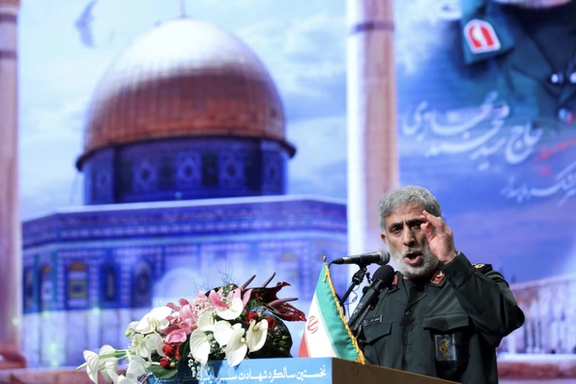
Reports of his death may have been greatly exaggerated.

Reports of his death may have been greatly exaggerated.
Days after media outlets suggested a top Iranian commander was killed in an Israeli air strike in Beirut, new reports citing regional sources said on Thursday that Esmail Qaani is alive but being detained by authorities for potential espionage.
The whipsawing accounts left Iran-watchers bewildered about the strange fate of the commander of the Islamic Revolutionary Guard Corps' elite Quds Force and whether the living embodiment of Iran's might abroad might be an Israeli turncoat.
Independent news outlet Middle East Eye reported on Monday that Qaani had been detained and was being questioned as the Islamic Republic seeks to understand how Israel was able to infiltrate its Lebanese ally Hezbollah and assassinate top leaders.
Sky News Arabia, citing Iranian sources, went further, saying Qaani suffered a heart attack while being questioned and that Iranian investigations centered around his chief of staff, named as Ehsan Shafiqi, and his possible communications with Israel.
Qaani has not been seen in public since an huge Israeli air strike on Beirut killed Hezbollah chief Hassan Nasrallah on Sept. 27.
Some media reports suggested he might have been attending a meeting with his successor Hashem Safieddine when he too was targeted in a bombardment on Oct. 3, but an advisor to IRGC commander-in-chief asserted on Wednesday that Qaani was "in perfect health" and would receive a military medal of honour from Supreme Leader Ali Khamenei "in the next few days."
The swirl of conflicting information has sparked attempts at analysis and, inevitably, morbid jokes.
"Rescuing the hostages and citizens of any country is the duty of the government of that country, and now it is the moral duty of Israel to go and rescue Qaani," quipped an Iranian X user.
Another depicted Qaani gazing up reverently at Supreme Leader Ali Khamenei and saluting him in Hebrew: "Shalom."
More sober, Iranian journalist Behrang Rahbari opined, "Whether Qaani is a spy or not, one thing is certain: the collapse of the security structure of the Islamic Republic and this means the collapse of the system."
Deploying image editing prowess, one user depicted Qaani in a full Israeli military uniform complete with Jewish religious kippah cap and chided, "I mean, from Soleimani to Haniyeh and Nasrallah, all that was your work?! Forgive me, friend! :)"
Similarly, Iranian activist Amin Pouria portrayed Qaani alongside Israeli and American honchos in uniform, Hebraizing his name to Ishmael Kahani.
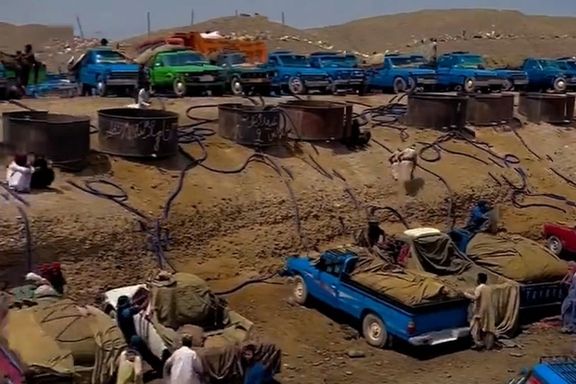
Iran’s gasoline smuggling crisis has reached unprecedented levels, with new estimates suggesting that up to 50 million liters of fuel are being illegally exported from the country every day.
This volume of fuel being siphoned out has cast doubts over the Islamic Republic’s narrative, which for years has placed the blame for smuggling on small-scale operators along the country’s borders. Instead, recent revelations point to a systemic operation involving high-level complicity.
Economist Mousa Ghaninejad ignited this debate in October 2024 when he provided an updated figure for the amount of gasoline being smuggled from Iran. Drawing from official statistics, Ghaninejad estimated that of the 120 million liters distributed daily across the country, only 70 million liters are actually consumed domestically.
“The rest is smuggled out of the country,” Ghaninejad said, pinning the figure at roughly 50 million liters per day—an amount that dwarfs previous estimates of around 20 million liters.
Transporting such an enormous quantity of gasoline would be a logistical feat beyond the capacity of the small-time fuel carriers the Islamic Republic often claims are responsible.
Hossein Raghfar, an economist, in an interview with the Eghtesad 100 news outlet on Wednesday went ahead with official figure of 20 million liters, saying: “This volume of smuggling cannot be the work of small time smugglers in border regions. It is definitely done by government entities.”
These smugglers, who typically use 2,000 to 2,500-liter tanks mounted on Nissan Junior pickup trucks, would need a convoy of at least 20,000 fully loaded trucks to move 50 million liters of gasoline in a single day. If these 4-meter-long trucks were lined up end to end with a three-meter gap between them, the convoy would stretch over 140 kilometers, highlighting the implausibility of small-scale smugglers being solely responsible for this volume of fuel trafficking.
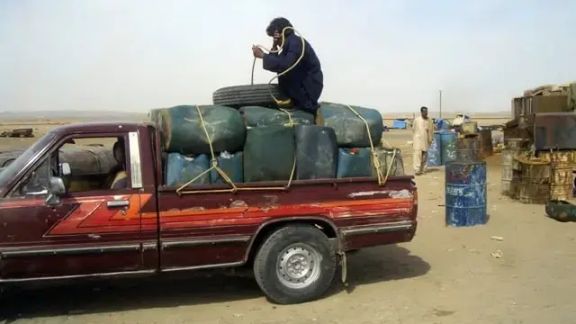
Even if one considers the lower-end estimate of 20 million liters, which has been consistently cited by insiders and the state media for years, a fleet of around 8,000 Nissan trucks would still be required to transport the fuel.
Larger tanker trucks, which can hold up to 40,000 liters, would still need to operate in significant numbers, requiring at least 500 tanker trucks to move 20 million liters and over 1,250 trucks to handle the 50 million-liter figure.
Systemic smuggling networks
Economic journalist Reza Gheibi explained that this volume of fuel smuggling is unlikely to be carried out by individuals or even small groups. "This huge volume of smuggling is for sure systematic, and we can find some signs of it as well,” Gheibi said. He pointed to cases in which underground gasoline pipelines have been discovered, particularly in southern provinces, and added that fuel is also being smuggled via small ships operating from ports controlled by the Islamic Revolutionary Guard Corps (IRGC).
“There is no monitoring over them, and they work totally clandestinely,” he added. “So, part of the expense of IRGC’s trans-border activities is made through the fuel smuggling.”
Gasoline in Iran is sold at a subsidized price of around two cents per liter, but the government is forced to buy millions of barrels of fuel at a price of nearly 60 to 70 cents per liter. Smugglers can then sell the fuel on the black market for as much as 40 cents per liter, creating a massive profit margin. For those behind the operations, this translates into millions of dollars of profit every day.
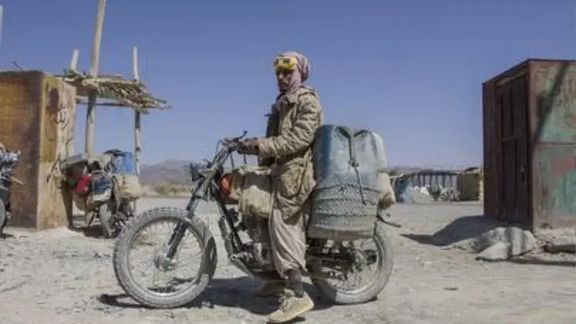
According to experts the sheer scale of the operations suggests the involvement of larger and more organized networks.
Smuggling networks within the system
The involvement of officials in fuel smuggling operations has become apparent over recent years, as investigations and arrests have revealed a network of corruption within government centers. In December 2022, Aref Akbari, the Public and Revolutionary Prosecutor of Hormozgan Province, southern Iran, announced the arrest of six rural mayors, three employees of the Ministry of Industry, and two members of the Engineering Organization on charges of collaborating with fuel smugglers. These individuals allegedly issued fraudulent certifications to heavy machinery owners, enabling them to receive subsidized fuel without actually operating the machinery.
In another high-profile case, the Public and Revolutionary Prosecutor of Iranshahr in Sistan and Baluchestan Province, Saeed Rashki, announced in May 2021 that the head of a local parliamentarian’s office had been arrested on fuel smuggling charges. Nearly all employees of the local oil company were also taken into custody, with only one or two individuals spared.
These cases provide a glimpse into the extent of officials’ involvement in fuel smuggling. In May 2023, Mohammad Jafari, Deputy Head of the Headquarters for Combating the Smuggling of Goods, stated: “We estimate that a total of 25% of the fuel allocated to power plants is being smuggled.” While Jafari’s comments did not specify which power plants or the type of fuel involved, they point to large-scale smuggling operations embedded in the country’s fuel distribution infrastructure.
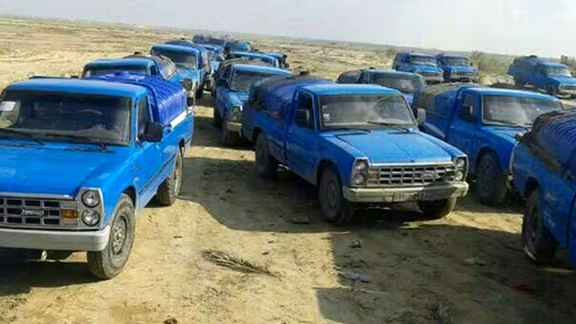
Such reports have consistently pointed to the complicity of government employees, while there is little evidence to support the idea that small-scale fuel carriers are responsible for smuggling gasoline on this scale. Instead, the available data suggests that lower-level government workers, many of whom have direct access to fuel distribution networks, play a central role in diverting fuel from the official supply chain into the black market.
Involvement of armed forces
One of the concerns surrounding the gasoline smuggling crisis is the role of Iran’s armed forces, particularly the IRGC, in facilitating or even directly participating in the operations. The IRGC controls a significant portion of the country’s transportation networks and border crossings, which according to Gheibi, makes it difficult to imagine that such large volumes of fuel could be smuggled out of the country without the IRGC’s knowledge or involvement.
With an average of 35 million liters of gasoline being smuggled daily, the theft appears to be organized through a network of actors linked to supervisory bodies, with the IRGC controlling much of the oversight of both the transportation network and the borders, as suggested by economic expert Gheibi.
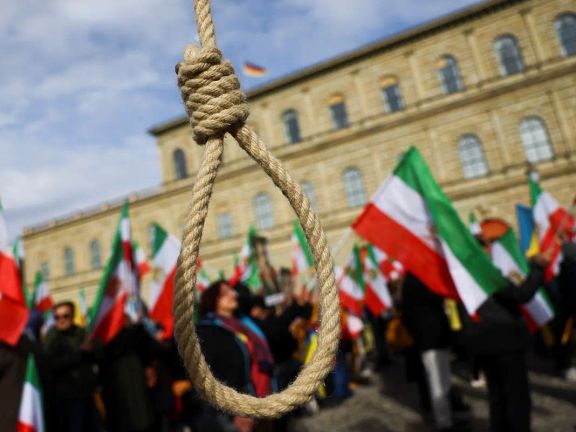
Iran has executed at least 531 people this year including twelve prisoners put to death on the eve of the International Day Against the Death Penalty, rights groups reported this week.
The grim statistics highlight Iran's position as one of the top enforcers of capital punishment worldwide, despite growing global calls to halt executions and address human rights concerns.
Of those executed so far this year, 18 were women and one was a juvenile offender, according to the Norway-based rights group Iran Human Rights (IHR).
“This year's World Day Against the Death Penalty holds particular significance for the Islamic Republic of Iran, where we continue to witness an alarming increase in the use of the death penalty,” said Mai Sato, UN Special Rapporteur on Human Rights in Iran, in a video message she shared on X.
Mai raised alarms over the targeted use of the death penalty against female activists and supporters of Iran’s feminist 2022 nationwide protests, sparked by the death of a young woman named Mahsa Amini in police custody.
Amnesty International accused Iranian authorities of using the death penalty to instill fear following the protests.
“Since the Woman Life Freedom uprising, Iran's authorities have weaponized the death penalty to terrorize the public. Their assault on the right to life underscores how global action is needed to halt executions,” Amnesty International Iran said in a statement on X.
Mahmood Amiry-Moghaddam, director of Iran Human Rights, warned that Iran is taking advantage of global distractions to ramp up its executions.
“Under the shadow of the threat of war with Israel, and taking advantage of the neglect of the media and the international community, the Islamic Republic has begun a widespread massacre in Iranian prisons, targeting the most vulnerable individuals in society who have been sentenced to death in the regime's unjust courts," Amiry-Moghaddam said.
"The aim of these executions is to instill fear in society and ensure the survival of the regime,” he added.
At least 811 people have been executed in Iran over the last 12 months, marking a 23% increase compared to the previous year, according to the US-based Human Rights Activists News Agency (HRANA).
Rights groups say prisoners were denied fair trials, with the surge in executions highlighting Iran’s defiance of global efforts to limit the use of the death penalty.
Iran conducted the most executions of any country in the world after China last year, Amnesty International said in a report in May, adding that nearly 75% of all executions worldwide in 2023 outside China were in Iran.

Former judiciary top official Hossein Ali Amiri, notorious for the persecution of Jewish and Bahai'i communities, has been appointed as the new governor of Fars Province in southern Iran by order of new president Mahmoud Pezeshkian.
The appointment and several others involving figures freighted with accusations of human rights abuses may belie Pezeshkian's campaign pledges to ease government repression.
Journalist Noushabeh Amiri reacted on X, stating: “The notorious and anti-Semitic judge of Shiraz received his bonus and became the Fars governor. How nice that Pezeskian was elected!”
Under Amiri's rule, was the 1999 arrest of 13 Jews on charges of espionage for Israel amid an era marked by heightened tension for religious minorities in Iran.
In Shiraz, 13 Jewish citizens were accused of spying for Israel—a charge that the Islamic Republic has frequently used against both Jews and Baha'is since the 1979 revolution.

Due to pressure campaigns and secret negotiations, the prisoners were gradually released in small groups, with the final group freed on February 19, 2003.
Initial reports surfaced online on March 18 but went largely unnoticed amid the 2003 Iraq invasion. All the individuals released later emigrated to Israel, where they now live with their families.
Amiri’s tenure in Shiraz also coincided with a separate case in the 1980s, when 16 Baha’i men and women were executed in the city on similar charges of spying for Israel. The executions were carried out without transparent trials.
His return to Fars as the province's governor has reignited the trauma of his legacy, raising alarms among minority groups who fear a resurgence of similar state-backed oppression.
His reappointment by the Pezeshkian administration, despite his past record, may be a signal of the government’s ongoing commitment to targeting dissidents and religious groups.

Unofficial estimates suggest that over 300,000 Baha'is live in Iran, but the Constitution only recognizes Islam, Christianity, Judaism, and Zoroastrianism. This makes the Baha'i community the largest unrecognized religious minority, subjected to systematic persecution since the 1979 revolution.
“Iranian authorities deprive Baha’is of their fundamental rights in every aspect of their lives, not due to their actions, but simply for belonging to a faith group,” said Michael Page, deputy Middle East director at Human Rights Watch in a report in April. “It is critically important to increase international pressure on Iran to end this crime against humanity.”
Amiri’s return coincides with the resurgence of another controversial figure in Fars Province: Asghar Torabpour, a former security chief known for his suppression of political prisoners and minorities during the 1980s. Torabpour served as head of prisons in multiple provinces, including Fars, and was directly involved in the mass executions of 1988, which saw thousands of political prisoners killed across Iran.
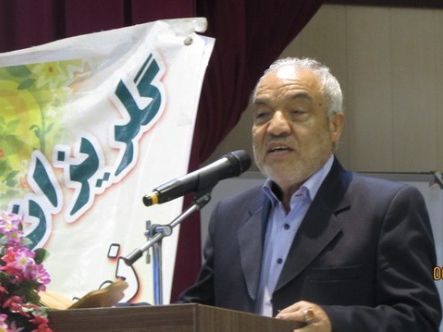
Torabpour now serves as Chief of Staff for the province’s blood money office.
Pezeshkian’s administration on Wednesday also announced the appointments of Mohammad Reza Babaei as governor of Yazd and Gholamhossein Mozaffari as governor of Khorasan Razavi.
Babaei, a top supporter of former president Ebrahim Raisi, was known for his criticisms of Hassan Rouhani's relatively moderate administration. He served as Deputy Planning Governor of Yazd under Mahmoud Ahmadinejad but resigned when Hassan Rouhani took office, despite being retained.
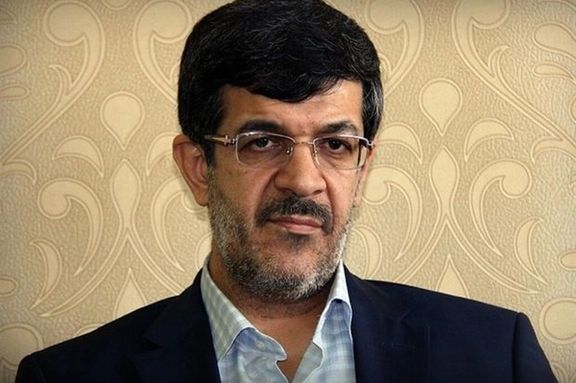
Gholamhossein Mozaffari has also been introduced as Khorasan Razavi governor. He is the only reformist appointee.
Pezeshkian, from the early days of his presidential campaign, promised reforms with figures from Hassan Rouhani’s cabinet, such as Mohammad Javad Zarif and Mohammad Javad Azari Jahromi, the former ministers of foreign affairs and communications, supporting him in the election.
However, in recent weeks, the new president's policies have led critics to accuse him of exploiting reformists and their voters during the presidential election. Earlier, he faced criticism over his cabinet picks, particularly for nominating Eskandar Momeni, who had an extensive military and law enforcement background and had played a role in suppressing popular protests in 2017, 2019, and 2022.
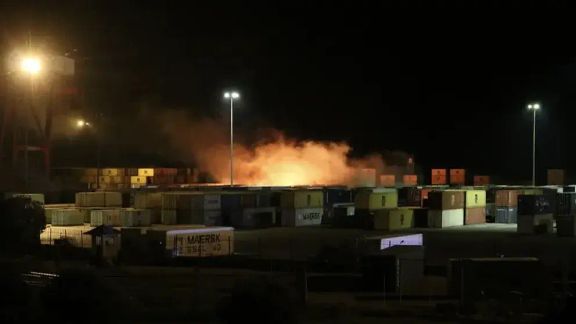
Israeli airstrikes hit multiple locations in western Syria early on Thursday, targeting sites associated with Iranian interests, according to Syrian media and regional reports.
Among the targets was a car manufacturing plant in the industrial town of Hisyah, 30 kilometers south of Homs, where Israeli forces caused material damage, as reported by Syria's state news agency, SANA.
"At around 1:00 am (2200 GMT Wednesday), the Israeli enemy launched an air attack... targeting a car assembly factory in the industrial area of Hisyah in Homs province" and a military position in Hama, state news agency SANA said, citing a military source.
This comes a day after an Israeli airstrike near the Iranian embassy in Damascus reportedly killed Mohammad Reza Fallahzadeh, the deputy commander of Iran's Quds Force.
The strike, which occurred in the Mezzah district of Damascus, left seven dead and 11 others injured, according to Syrian state media. The attack also caused damage to nearby buildings, leading to widespread destruction in the area.
In addition to the strike on Hisyah, the Syrian Observatory for Human Rights, an independent monitoring group, confirmed that Israeli forces also targeted the southern outskirts of Hama. Meanwhile, Al Arabiya reported that Israeli airstrikes also hit the Al-Kiswah area, southwest of Damascus, a known hub for Iranian military activity in Syria. According to these reports, the Al-Kiswah attack specifically targeted a base associated with a group linked to Iran.
The Hisyah plant, identified as the Iranian car manufacturer Saipa factory, which has ties to Iranian operations, was struck for the second time in less than a week. The factory’s Iranian CEO, Ahmad Karegar, stated that the facility had been designated an "international relief headquarters" and claimed that the land the factory occupies belongs to Iran. He added that despite the Israeli strikes, the production line of the factory remained intact.
However, analysts have speculated that the site may serve a dual purpose, functioning not only as a car manufacturing plant but also as a hidden arms depot for Iran and Hezbollah. The size of the factory, spanning 30 hectares, and the precision of the Israeli strikes have fueled suspicions that it may be used to store military equipment and weaponry, though Israel has not publicly claimed responsibility for these attacks.
These strikes come amid heightened tensions in the region following Iran’s missile attack on Israel. Iran has been increasingly active in Syria, where it supports Hezbollah and other militias operating in the country. Israel has conducted hundreds of airstrikes on Iranian-linked sites in Syria in recent years, aiming to prevent Tehran from establishing a strong military foothold near its borders.
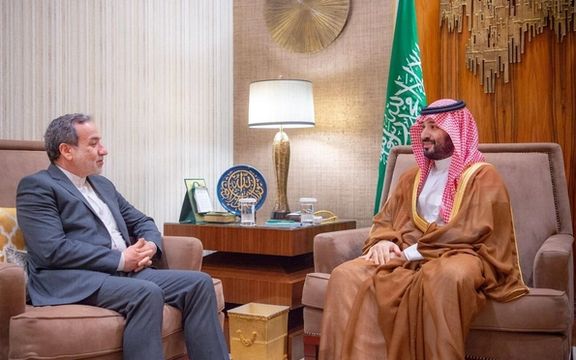
Iran’s foreign minister says indirect channels are open with the US to seek a solution to conflict in the Middle East, while the US says messages have been sent to Tehran to end support for “terrorism.”
Al Jazeera’s Arabic and Persian websites quoted FM Abbas Araghchi as saying that “Diplomatic channels with the United States have remained open through other countries, and we are exchanging views indirectly. There is a consensus on the need to find a diplomatic solution to the ongoing crisis.”
Iran’s Tasnim news affiliated with the IRGC also quoted Araghchi as saying that diplomatic channels with the United States remain open through other countries, and “we are exchanging views indirectly. There is a consensus on the need to find a diplomatic solution to the ongoing crisis.”
US State Department spokesperson Matthew Miller during his daily briefing on Wednesday did not deny the existence of back channels, but he did not confirm negotiations with Iran. Refusing to be specific about contacts with Tehran, Miller said, “I’m not going to speak to any specific communications, but we have long made clear to the Government of Iran, both directly and indirectly, that they should stop funding terrorism in the region...”
Asked about reports that Arab sates were putting together a proposal for a region-wide ceasefire, Miller denied knowledge of any such initiative. “There isn’t such a plan or proposal to my awareness. I obviously can’t speak to what other countries may or may not be developing on their own, which is not to say that it’s happening, but certainly no one has reached out to the United States about such a proposal, and we’re not in talks with any countries about such a proposal.”
Araghchi who wrapped up a trip to Saudi Arabia and Qatar on Wednesday stressed that during his trip, he held discussions on how to achieve a ceasefire to prevent more death and destruction.
According to Al Jazeera he said, "Saudi Arabia plays an important role in the region, and Qatar is also an influential country. We are consulting with them to stop the war."
Araghchi’s regional tour took place amid threats of an Israeli retaliatory strike for Iran’s ballistic missile barrage on October 1.
Iran has long been demanding a ceasefire in Gaza, where the Israeli military has killed thousands of Hamas fighters and dismantled their military infrastructure, including underground tunnels. As Israel began to intensify its attacks on Iran’s most important proxy force, the Lebanese Hezbollah, eventually killing its leader Hassan Nasrallah, Tehran also raised demands for a ceasefire there.
With relentless military pressure on Hezbollah, the Lebanese daily An-Nahar reported on Thursday that numerous mid-level Hezbollah leaders have recently left for Tehran or Baghdad. The group is undergoing major internal restructuring to guard against potential infiltration within its ranks, according to the Lebanese paper.